Genesis Chapter 5 in the Bible lays the groundwork for the lineage of humanity, starting with Adam and Eve, the first man and woman, and extending through ten generations to Noah. Navigating this ancestral history, however, can quickly become complex. A visual representation, specifically an Adam and Eve family tree, offers a clear and accessible way to understand these genealogical connections. It provides an illustrative depiction of the relationships among their descendants and sheds light on how Adam’s lineage is believed to have shaped the world as we know it today.
Let’s delve into the intricacies of this foundational family tree and explore its significance.
Part 1: Unveiling the Adam and Eve Family Tree
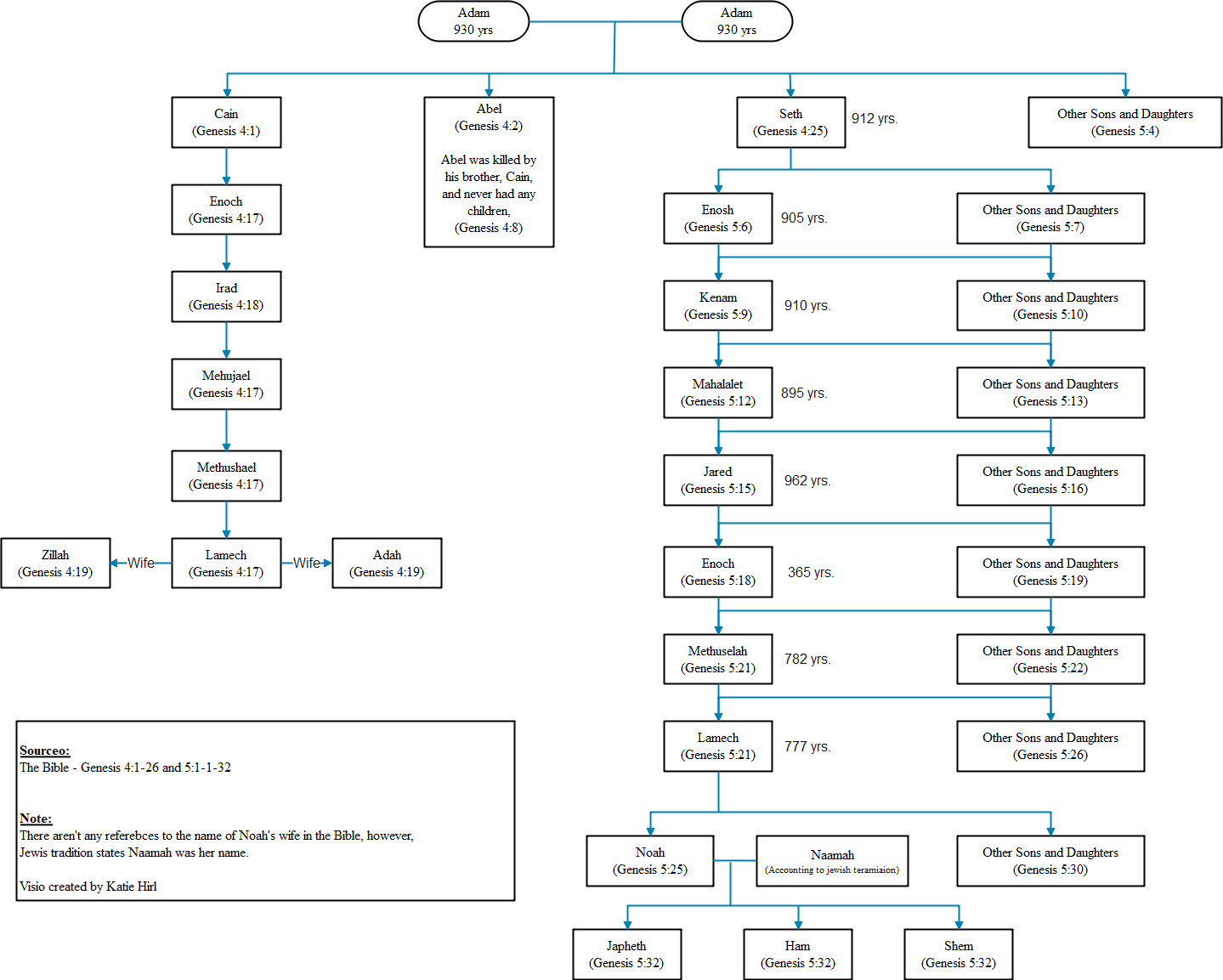 basic genogram symbols library
basic genogram symbols library
Image: A visual representation of the Adam and Eve family tree, illustrating the lineage from Adam and Eve through their descendants to Noah’s sons.
A Quick Glance at the Lineage
The first generation in this biblical genealogy is undeniably Adam and Eve. The scriptures indicate they lived to the age of 930 years, marking the beginning of human history as described in Genesis.
Following them is the second generation, comprised of Adam and Eve’s children. Most recognize the names Cain, Abel, and Seth. As depicted in the family tree, Abel did not have any children. This is attributed to his early death at the hands of his brother Cain.
This particular Adam and Eve family tree culminates in the eleventh generation, represented by Shem, Ham, and Japheth, the sons of Noah. These figures are pivotal in the biblical narrative as the progenitors of humanity after the Great Flood.
Part 2: Delving Deeper into Adam and Eve’s Descendants
Having provided a general overview of the family tree of the first humans, let’s now explore the details of this lineage, examining the key figures and their stories.
2.1. Adam and Eve: The Dawn of Humanity
Adam and Eve are recognized within the Abrahamic faiths – Judaism, Christianity, and Islam – as the first man and woman, created by God and placed in the Garden of Eden. According to the biblical account, Eve was created from Adam’s rib while he was asleep in the Garden, signifying the origin of humankind.
The narrative continues with their transgression: tempted by a serpent, they disobeyed God’s command and ate the forbidden fruit from the Tree of Knowledge of Good and Evil. This act of disobedience led to their expulsion from paradise and their consignment to a life of hardship on Earth.
2.2. The Sons of Adam and Eve: Cain, Abel, and Seth
Cain and Abel: A Tale of Two Brothers
Cain, the firstborn of Adam and Eve, derives his name from the Hebrew word Qayin, meaning “acquired” or “possession”. Genesis 4:2 describes Cain as “a tiller of the ground,” indicating his occupation as a farmer.
Abel, the second son, is introduced in Genesis 4:2 as well. His name, Hebel in Hebrew, translates to “breath” or “vapor,” perhaps alluding to the transient nature of his life. Abel became a shepherd, tending to flocks, as stated in Genesis 4:2 (NIV).
The brothers presented offerings to God from their respective labors. Abel offered the firstborn of his flock, while Cain presented some of his harvest. Scripture notes that God favored Abel’s offering over Cain’s, sparking jealousy and resentment in Cain, as detailed in Genesis 4:5. The reason for the rejection of Cain’s offering is not explicitly stated in the text, leading to various interpretations.
Driven by envy, Cain invited Abel to the field, where he tragically murdered his brother, despite a divine warning from God (Genesis 4:6). As a consequence, God punished Cain, declaring him “a fugitive and a vagabond on the earth.”
Cain protested the severity of the punishment, fearing for his life. God, in response, placed a mark upon Cain, promising sevenfold vengeance upon anyone who would kill him, thus condemning Cain to a life of isolation.
Seth: A New Beginning
Seth, the third son, was born to Adam and Eve after Abel’s death. Genesis 4:25 indicates that Eve named him Seth, derived from the Hebrew word Sheth, meaning “appointed” or “placed,” explaining, “For God has appointed for me another child instead of Abel, because Cain killed him.” It’s mentioned that Adam and Eve had other sons and daughters as well.
Seth married and fathered Enosh. Genesis Chapter 5 subsequently traces the lineage of Seth, from Enosh down to Noah, establishing a line of descendants that is central to the biblical narrative.
2.3. Grandchildren and Beyond: Tracing the Descendants
The Lineage of Seth: Genesis 5
Genesis 5 details the descendants of Seth, providing ages and lifespans, emphasizing the longevity of these early generations. Adam fathered Seth at 130 years old and lived a total of 930 years.
- Seth was 105 years old when Enosh was born. Seth lived 807 years after Enosh’s birth, totaling 912 years.
- Enosh fathered Kenan at 90 years old and lived 905 years in total.
- Kenan had Mahalalel at 70 years old and lived for 910 years.
- Mahalalel fathered Jared at 65 and lived for 895 years.
- Jared fathered Enoch at 162 years old and lived to be 962 years old.
- Enoch fathered Methuselah at 65 and lived for 365 years, notably being “taken by God.”
- Methuselah fathered Lamech at 187 and lived for 969 years, becoming the longest-lived person in the Bible.
- Lamech fathered Noah at 182 and lived for 777 years.
- Noah fathered Shem, Ham, and Japheth at 500 years old.
The Adam and Eve family tree, as traditionally depicted, often concludes with Noah’s sons. According to Genesis, Noah, his sons, and their wives survived the Great Flood. These three couples are then considered the progenitors of the repopulated Earth and the ancestors of all the nations that followed. Those interested in further study can explore the “Generations of Noah” or “Origines Gentium” for deeper insights.
The Descendants of Cain: Genesis 4:17-26
Genesis 4 also briefly outlines the descendants of Cain, though in less detail than Seth’s line.
- Cain settled in the land of Nod, east of Eden, meaning “wandering,” and fathered Enoch.
- Enoch fathered Irad.
- Irad fathered Mehujael.
- Mehujael fathered Methushael.
- Methushael fathered Lamech.
- This Lamech broke from God’s order by taking two wives, Adah and Zillah, becoming the first polygamist mentioned in the Bible. Adah gave birth to Jabal, who is described as the “father of those who dwell in tents and have livestock,” and Zillah gave birth to Jubal, considered the “father of all those who play the lyre and pipe.”
Part 3: Creating Your Own Biblical Family Tree
In our visually-driven age, presenting biblical narratives through visual aids like timelines and family trees can significantly enhance understanding, particularly for younger generations. Visual representations can make complex stories more memorable and facilitate a deeper engagement with religious texts.
Whether you are an educator, clergy member, or a parent teaching children, incorporating visuals can be a powerful tool for conveying biblical stories and teachings more effectively. “A picture is worth a thousand words” holds true when it comes to illustrating complex genealogies and historical connections.
Let’s explore how to create a family tree, focusing on the Adam and Eve lineage. This knowledge can then be applied to visualizing other biblical families such as Abraham and Sarah, or Joseph and Mary.
Building a Biblical Family Tree with EdrawMax
For creating family trees and other diagrams with ease, EdrawMax stands out as a user-friendly and versatile solution. This diagramming software simplifies the process of visualizing genealogical relationships in just three steps.
EdrawMax is particularly accessible and intuitive, offering a wide array of family tree templates that are readily available. For beginners, browsing these templates and selecting a suitable example is a quick and effective way to start. This eliminates the need to begin from scratch.
For users who prefer a more customized approach, EdrawMax allows for drag-and-drop creation using genogram symbols. Relationships can be easily established and modified using a cursor-based interface.
Importantly, EdrawMax offers a free trial, allowing users to create several family trees without initial cost. This provides an opportunity to explore the software’s features and determine its suitability before committing to a purchase.
You can download the EdrawMax application to your computer or utilize its online version for free access.
Free Download Free Download Free Download Try Online Free
Try the app & get 500 free AI tokens
Scan Now
Free & Safe
Available on:
Get 500 AI tokens free on the app
Step 1: Template Selection
Navigate to the Template Community within the EdrawMax dashboard and search for “Family Tree.” For more specific results, you can refine your search, such as “Adam and Eve family tree,” “Abraham and Sarah,” or “Jesus Christ family tree.”
From the displayed template options, choose the one that best aligns with your needs and click Use Immediately.
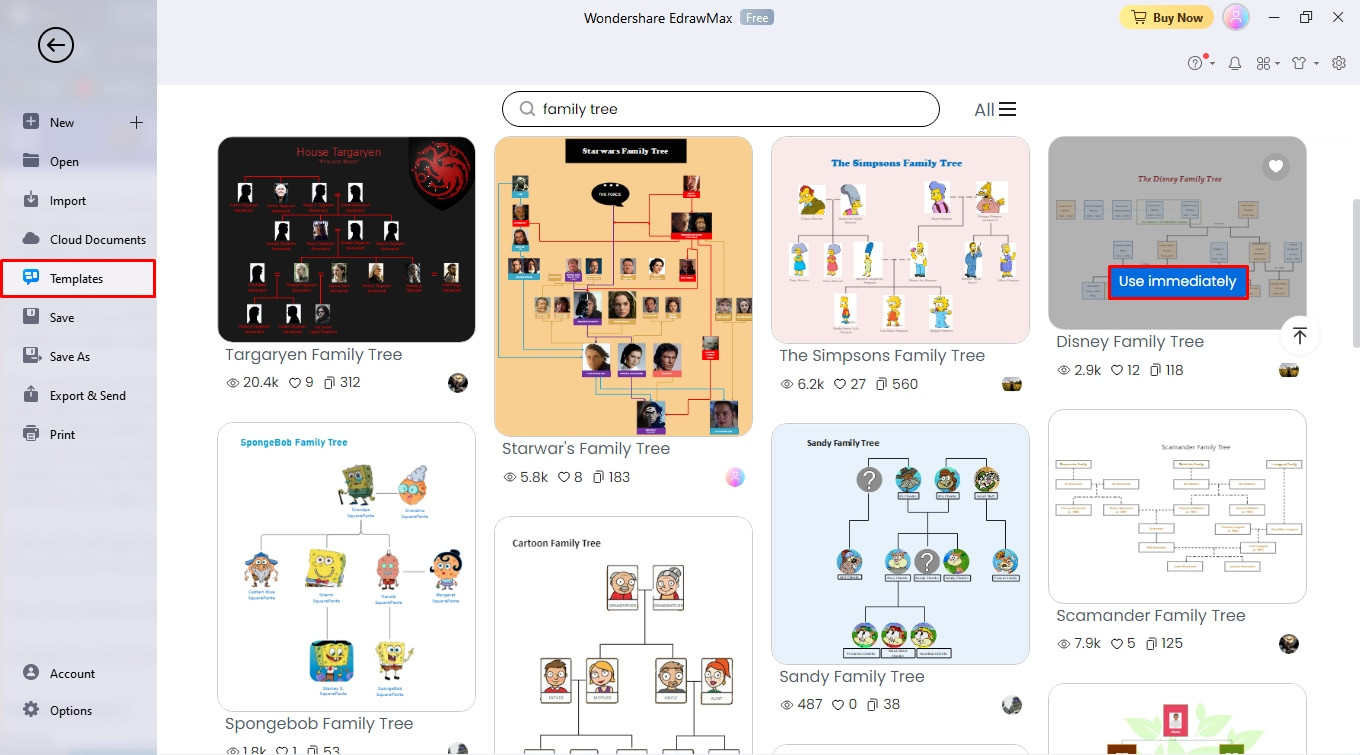 family-tree-edrawmax-step-1
family-tree-edrawmax-step-1
Step 2: Customization
Once in the editing interface, utilize the symbol library on the left to drag and drop shapes onto the canvas. Establish connections between individuals using the connector points available on each shape. Begin adding names and details by double-clicking on the shapes.
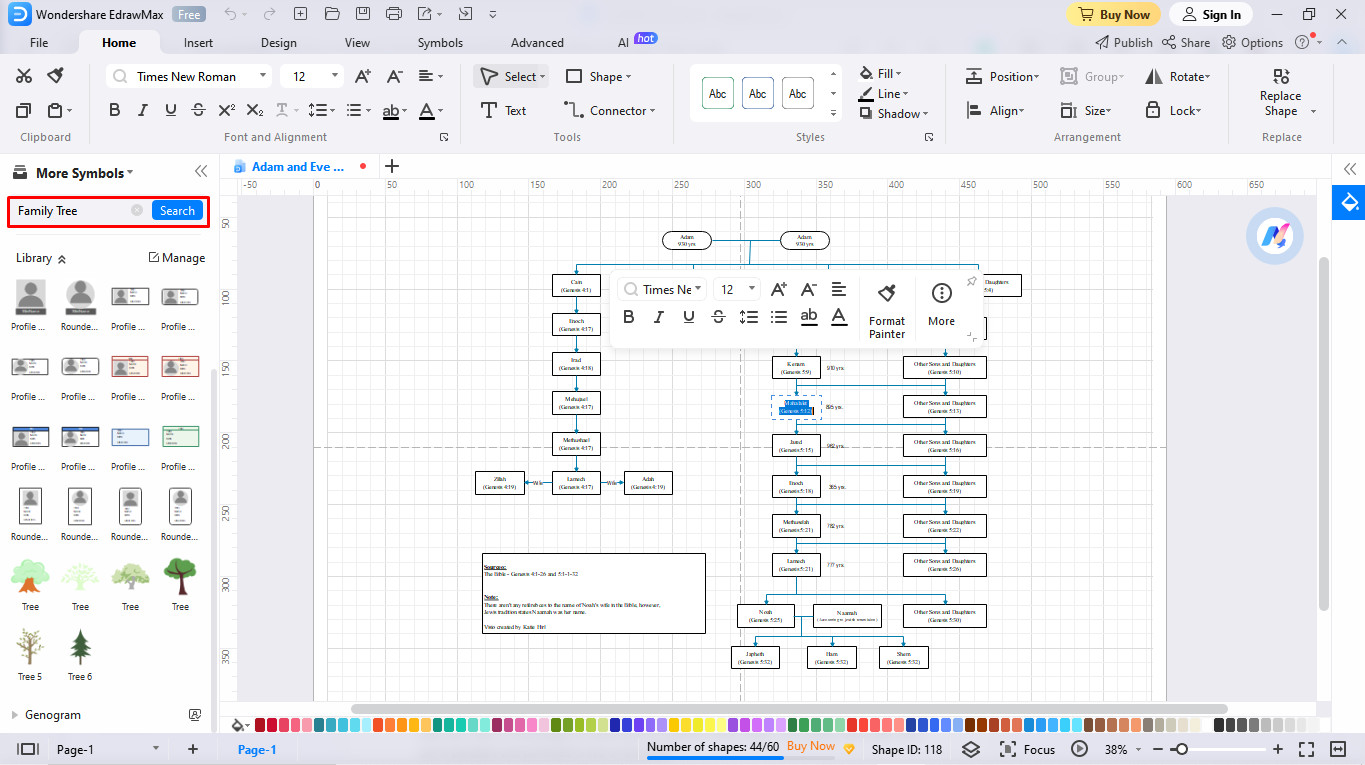 family-tree-edrawmax-step-2
family-tree-edrawmax-step-2
Step 3: Design and Aesthetics
Enhance the visual appeal of your family tree by utilizing the Design tab located on the top toolbar. This section allows you to customize fonts, color schemes, and overall themes to create a visually engaging diagram.
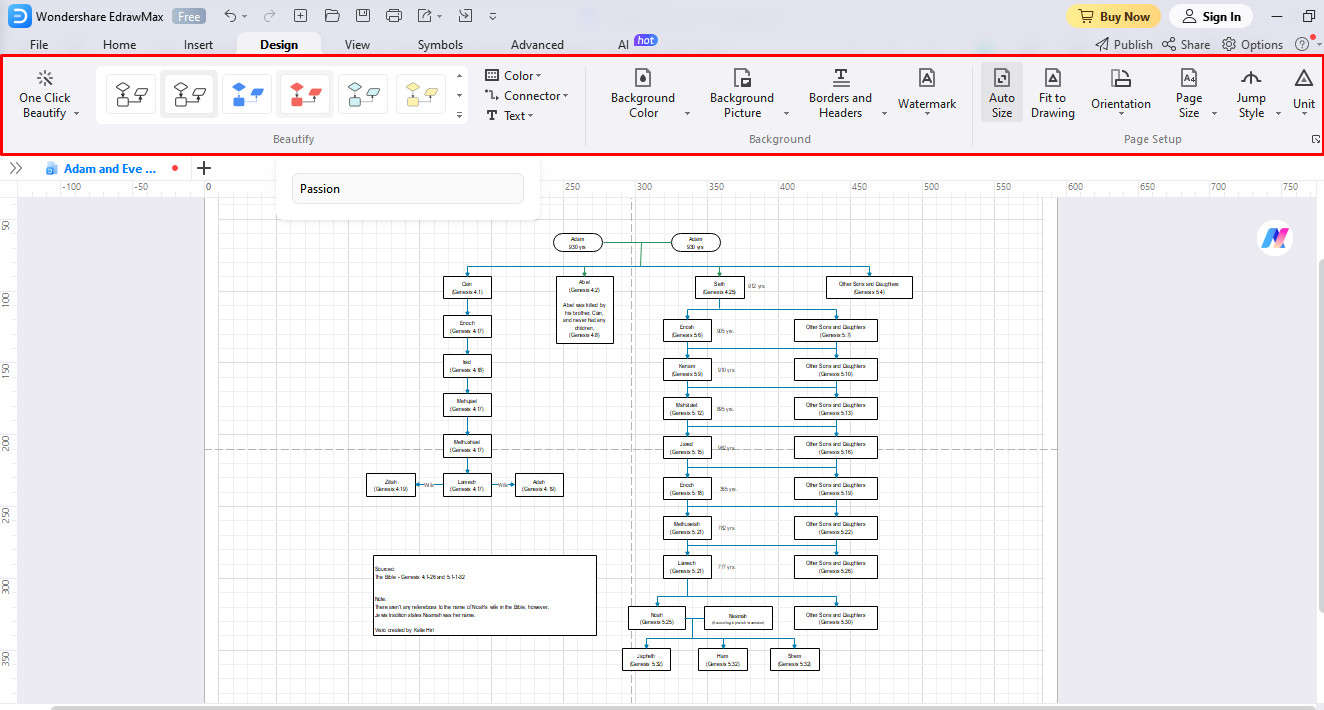 family-tree-edrawmax-step-3
family-tree-edrawmax-step-3
Step 4: Export and Sharing
Finally, export your completed family tree in your desired format, such as Visio, PPT, PDF, or JPG. Navigate to File Menu > Export > Preferred Format in the top-left corner to save and share your creation.
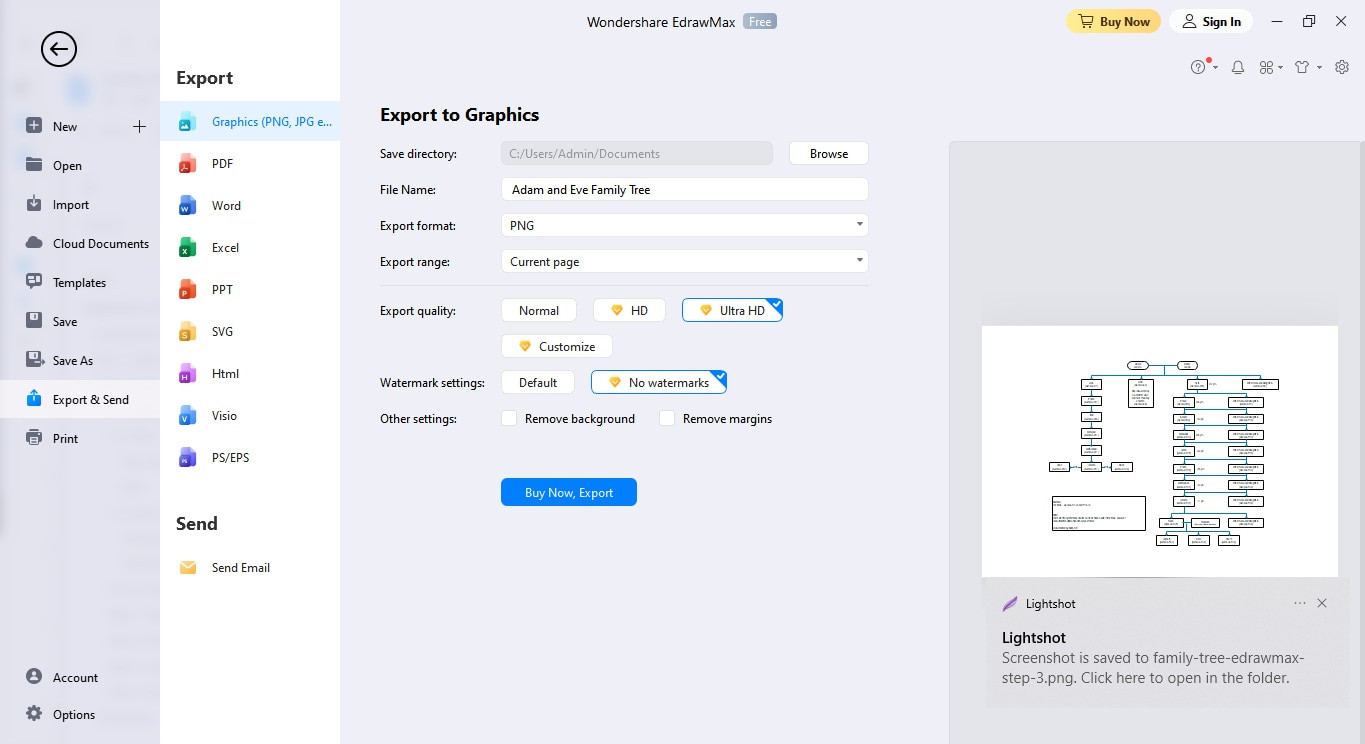 family-tree-edrawmax-step-4
family-tree-edrawmax-step-4
Free Download Try Online Free
app store google play Try Online Free
Conclusion: Understanding Our Ancestral Roots
Adam and Eve hold a central position in biblical theology, connecting humanity to both the Old and New Testaments and ultimately to Jesus. Their expulsion from the Garden of Eden represents a pivotal moment in the narrative, signifying both punishment and the need for redemption. For many Christians, the lineage extending from Adam and Eve, through approximately seventy generations, is a significant part of their understanding of human history and their place within it.
However, grasping the intricacies of these generations can be challenging without a clear visual framework. While the Bible may not provide specific dates and timelines for these generations, visualizing the Adam and Eve family tree aids in comprehending these doctrines and understanding the relationships within the early biblical narrative. It illuminates the connections and interactions among the ten generations leading up to Noah, providing a valuable tool for biblical study and genealogical understanding.
EdrawMax Desktop
Simple alternative to Visio
210+ types of diagrams
10K+ free templates & 26k+ symbols
10+ AI diagram generators
10+ export formats
Free Download Free Download Free Download
EdrawMax Online
Edit diagrams anywhere, anytime
Personal cloud & Dropbox integration
Enterprise-level data security
Team management and collaboration

